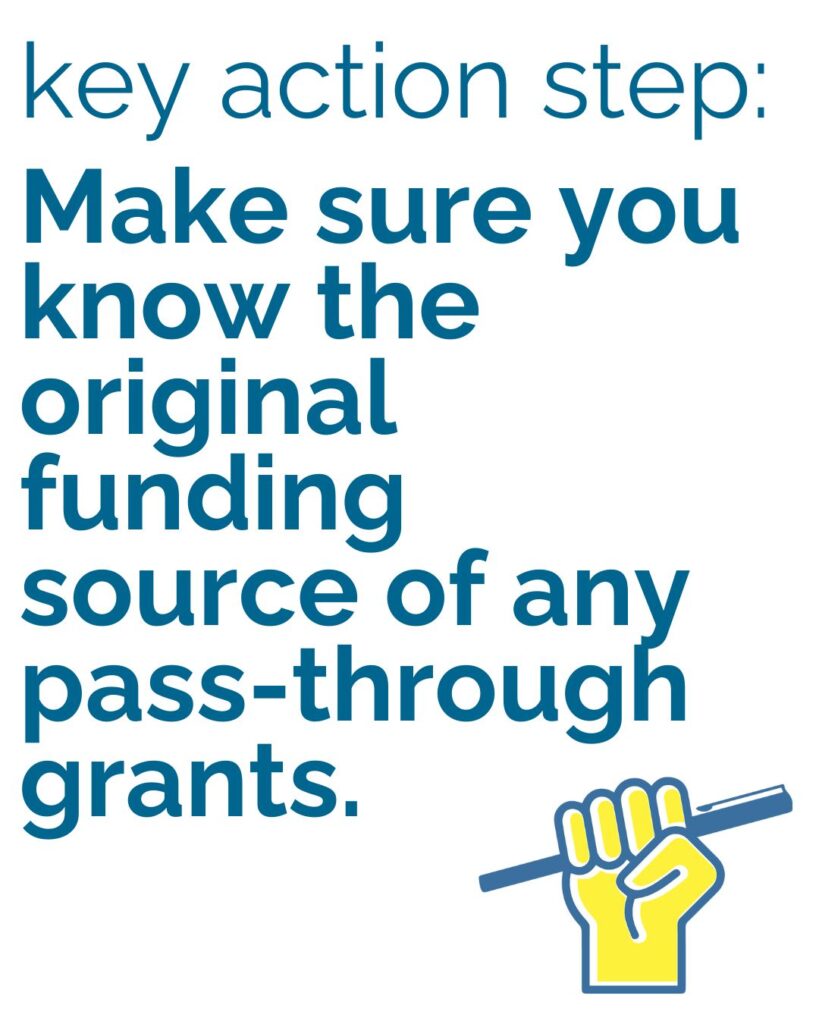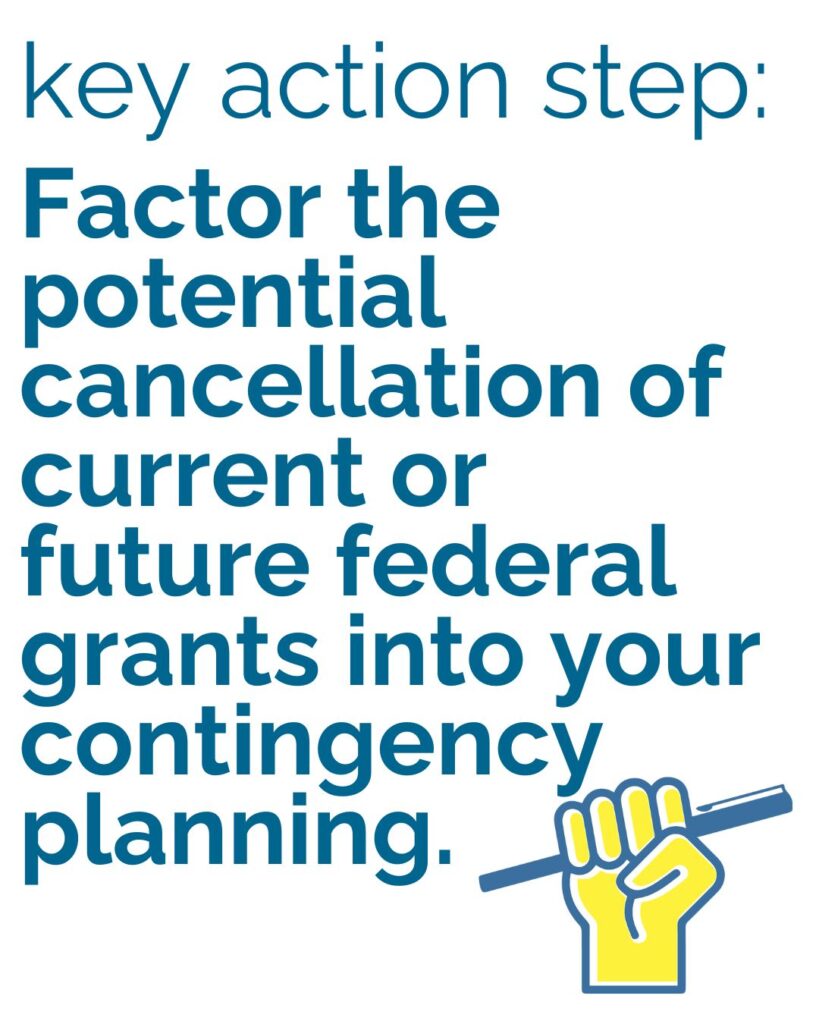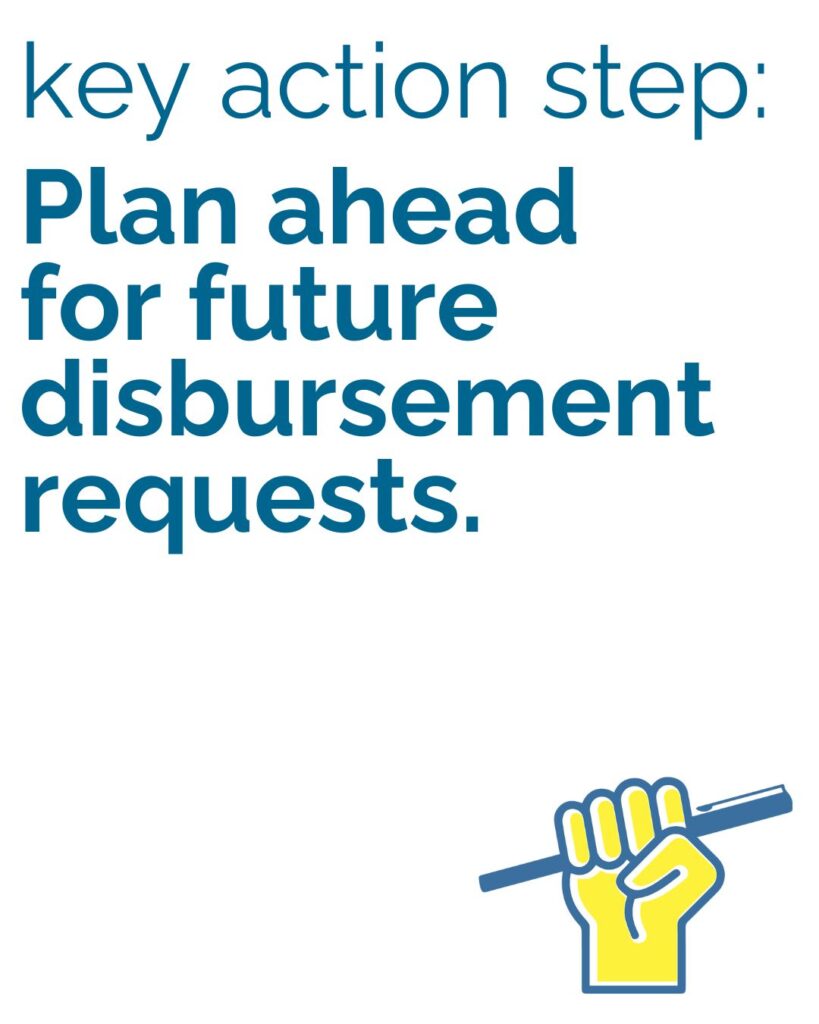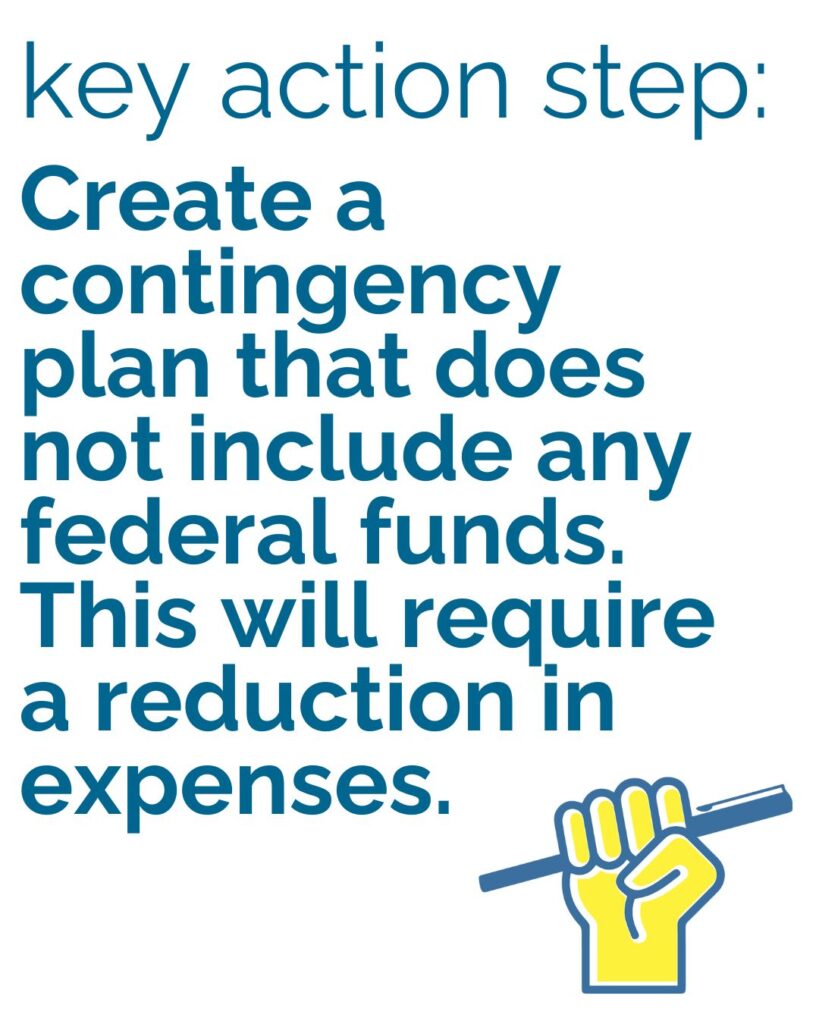Executive Order on “Increasing Oversight of Federal Grant Making”
What Nonprofits Need to Know Now
Since the new administration took office earlier this year, Elevate’s nonprofit clients continue to be impacted by a wide range of Executive Orders. A recent Executive Order issued August 7, 2025 makes substantial changes to the development, decision-making, and disbursement of discretionary grants at the federal level. This article summarizes some of the most salient details for nonprofit organizations.
What Happened & Immediate Ramifications
On August 7th, President Trump’s White House published an Executive Order designed to “improve the process of Federal grantmaking while ending offensive waste of tax dollars.”
Short-term, the most significant impacts of this Executive Order are that
1. All federal agencies must pause any new funding until they designate a senior appointee to oversee all discretionary grant processes according to the new requirements in the Executive Order.
A senior appointee is intended to be a political appointee, not a career civil service staff member.
2. Within 30 days (so by September 7th), each agency head will review the agency’s standard grant terms and conditions for compliance with the new Executive Order and submit a report to the Director of the Office of Management and Budget.
What this means for nonprofits right now:
- If you were anticipating a new NOFA or RFP in the next few months for a federal discretionary grant, it will likely be delayed.
- If you currently have a discretionary grant from any federal agency, you may be required to agree to updated terms and conditions allowing the government to, for example, terminate the grant at any time or require additional documentation to draw down funds (more on this below!).
What Does this Executive Order Mean For My Organization?
Beyond the short-term ramifications, there are a variety of new requirements for federal agencies that focus on increased oversight of all aspects of discretionary grant funding, from the development of initial RFPs and NOFAs to disbursing funds and canceling grants.
Here are five changes to federal discretionary grantmaking all nonprofits should know:
1. The Executive Order is limited to discretionary funding, sometimes referred to as competitive grants. It does not include programs where legislation establishes an entitlement to the funds on the part of the recipient, such as block grants; those awarded based on a statutory formula; or disaster recovery grants. Many nonprofits Elevate works with receive federal funding primarily as pass-through funds from their local government. In many cases, this Executive Order will not affect those funds.
 Key Action Step: Make sure you know the original funding source of any pass-through grants. Block grants, such as Child Development Block Grants or Community Development Block Grants, are not directly affected by this Executive Order. If your local government has applied for and secured competitive federal funding and then re-granted to you, those funds may be at-risk.
Key Action Step: Make sure you know the original funding source of any pass-through grants. Block grants, such as Child Development Block Grants or Community Development Block Grants, are not directly affected by this Executive Order. If your local government has applied for and secured competitive federal funding and then re-granted to you, those funds may be at-risk.
2. Organizations that are currently funded via a discretionary federal grant or that are planning to apply for a discretionary grant in the future should be aware that they may be required to agree to new terms, particularly the government’s right to cancel the grant at any time (“termination for convenience”), including when the award no longer advances agency priorities or the national interest.
It is worth noting that there are several active lawsuits challenging the government’s cancellation of environmental and climate justice grants via the Environmental Protection Agency, public safety grants via the Department of Justice, and agricultural and food insecurity grants from the US Department of Agriculture. All three lawsuits argue to some degree that the cancellation of this funding was unlawful because grantees were implementing programs and services aligned to the original intent of the grants and that the Executive Branch cannot cancel existing grant programs due to changing political priorities or agency goals. Notably, federal judges have ruled in several of these cases that the federal government needs to restore funding to all canceled grants while the lawsuits are ongoing, one as recently as August 14th.
However, with the implementation of this Executive Order and the nuance of the legal argument – that the initial cancellations were not well-justified or lawful under current government policies and regulations on grant awards – there is a real possibility that future federal grants will be more easily terminated, even if these lawsuits successfully establish that recent cancellations were unlawful.
 Key Action Step: Factor the potential cancellation of current or future federal grants into your contingency planning. If discretionary grants can be terminated based on policy changes at the federal level, they will represent greater operational risk to nonprofits.
Key Action Step: Factor the potential cancellation of current or future federal grants into your contingency planning. If discretionary grants can be terminated based on policy changes at the federal level, they will represent greater operational risk to nonprofits.
3. Organizations receiving federal grants in the future will be required to provide justifications for each draw down of funds, including documentation. While this is, to some extent, already required for many federal grants, experts generally believe it will introduce additional administrative burden for organizations seeking to actually spend awarded funds.
 Key Action Step: Plan ahead for future disbursement requests. Check-in with finance and program staff to ensure that their recordkeeping is effective and will support detailed justifications for the future draw-down of funds.
Key Action Step: Plan ahead for future disbursement requests. Check-in with finance and program staff to ensure that their recordkeeping is effective and will support detailed justifications for the future draw-down of funds.
4. The eligibility and review criteria for federal proposals is shifting. Organizations seeking federal funds should be aware that the new political appointees for each agency will be looking for the following criteria when approving discretionary grants:
a. Funds advance the President’s priorities;
b. Funds cannot be used to fund, promote, encourage, subsidize or facilitate:
i. Racial preferences, including activities for which race or intentional proxies for race are used to determine employment or program participation,
ii. Denial by the grant recipient of the sex binary,
iii. Illegal immigration,
iv. Any other initiatives that compromise public safety or promote “anti-American” values;
c. Grants should be given to a broad range of organizations;
d. Grants should be given to organizations with lower indirect cost rates, if all other considerations are equal.
It is worth noting that the language here – “promote, encourage, subsidize, facilitate” – encourages government agencies to decline grant awards for organizations that do not align with their philosophies, even if the specific requested grant funds are aligned. Moreover, the mandate that funds cannot be used for anything that the government deems as a threat to safety or American values is sufficiently broad to be used in a wide variety of contexts by current and future administrations to limit, cancel, or refuse disbursement of grant funds.
 Key Action Step: While Elevate has successfully helped many organizations thoughtfully assess whether their work does or does not align with the President’s priorities and identified a path to maintain existing funding or secure new funding in many cases, these criteria will likely exclude many nonprofits from all federal funding for the foreseeable future. This may mean that organizations need to transition to a contingency plan that does not include federal funds, which will require reducing expenses in the short-term. Long-term, this shift in federal funding policy and philosophy does incentivize nonprofits to look into other funding streams, including private philanthropy, individual donors, and earned revenue.
Key Action Step: While Elevate has successfully helped many organizations thoughtfully assess whether their work does or does not align with the President’s priorities and identified a path to maintain existing funding or secure new funding in many cases, these criteria will likely exclude many nonprofits from all federal funding for the foreseeable future. This may mean that organizations need to transition to a contingency plan that does not include federal funds, which will require reducing expenses in the short-term. Long-term, this shift in federal funding policy and philosophy does incentivize nonprofits to look into other funding streams, including private philanthropy, individual donors, and earned revenue.
Additional Resources
We have summarized the most important points for our client organizations and others like them – U.S. based nonprofit organizations in all sectors with budgets between $1 million and $135 million that rely on private and public grant funding. We work less often with institutions of higher education or research institutions, both of which are heavily impacted by this Executive Order, and we recommend these organizations reference more comprehensive guidance provided by the following excellent resources:
Finally, earlier this year Elevate hosted a 3-part virtual conversation series on Navigating Uncertainty in the Funding Landscape. Key takeaways and resources from these sessions are summarized in three separate articles on this blog:
Would you like a downloadable version of this article to save or print and share? Click the button below to access a PDF of the article.
DOWNLOAD THE ARTICLE
About the Author:

Vice President of Client Services










 Key Action Step:
Key Action Step:  Key Action Step:
Key Action Step:  Key Action Step:
Key Action Step:  Key Action Step:
Key Action Step: 




